Posts Tagged ‘Sir Winston Churchill’
BEHIND THE DESIGN: The hidden features in the Winston Churchill £2 Set
Remembered as Britain’s legendary wartime leader, a Nobel Prize winning author and a passionate painter… Sir Winston Churchill wore many “hats” in his long and varied life.
And these are some of his roles and responsibilities that have been thoughtfully honoured with the BRAND NEW Sir Winston Churchill £2 Coin Set.
Watch our video below to discover the story behind each design in this special collection – including some special hidden features!
Already in HIGH DEMAND with collectors, each design by David Young reflects on Churchill’s undeniable legacy…
The Leader
His most famous role, Churchill is best known for leading Great Britain during World War II, where his indomitable spirit and strategic foresight rallied the British people and helped to navigate the challenges of war. David’s design shows Churchill making his famous “V for Victory” gesture…
The Writer
Churchill was a prolific writer, penning several historical accounts and memoirs. He was awarded the Nobel Prize for Literature in 1953 and that very prize can be seen in David’s design.
The Orator
Renowned for his powerful and stirring oratory, Churchill delivered some of the most memorable speeches in history, such as the “We shall fight them on the beaches” speech and a famous line from that very speech is inscribed as part of the coin’s design.
The Painter
In his later years, Churchill found solace in painting, producing over 500 works of art under the pseudonym “Charles Morin”. Churchill’s passion for painting helped him with his depression, which he referred to as his “Black Dog”. David’s design shows a black dog sat alongside Churchill as he’s painting another masterpiece.
The Patriarch
Despite his demanding career, Churchill maintained a close relationship with his family. He was devoted to his wife, Clementine and his children. David’s design shows Churchill alongside four of his children. Churchill is also holding a Marigold – in a touching tribute to his daughter Marigold who died as a child.
The Winston Churchill BU £2 Set
Available exclusively from The Westminster Collection, you can place your reservation today for JUST £64.95 (+p&p). £2 coin sets are often highly sought-after with collectors and considering the importance of this release – perfectly honouring one of World War II’s most important figures on the 80th anniversary of D-Day – this has the makings of an all-time great.
Click here to secure the BRAND NEW Sir Winston Churchill BU £2 Set >>
Churchill’s “V for Victory” Campaign: A Leader’s Powerful Symbol of Unity
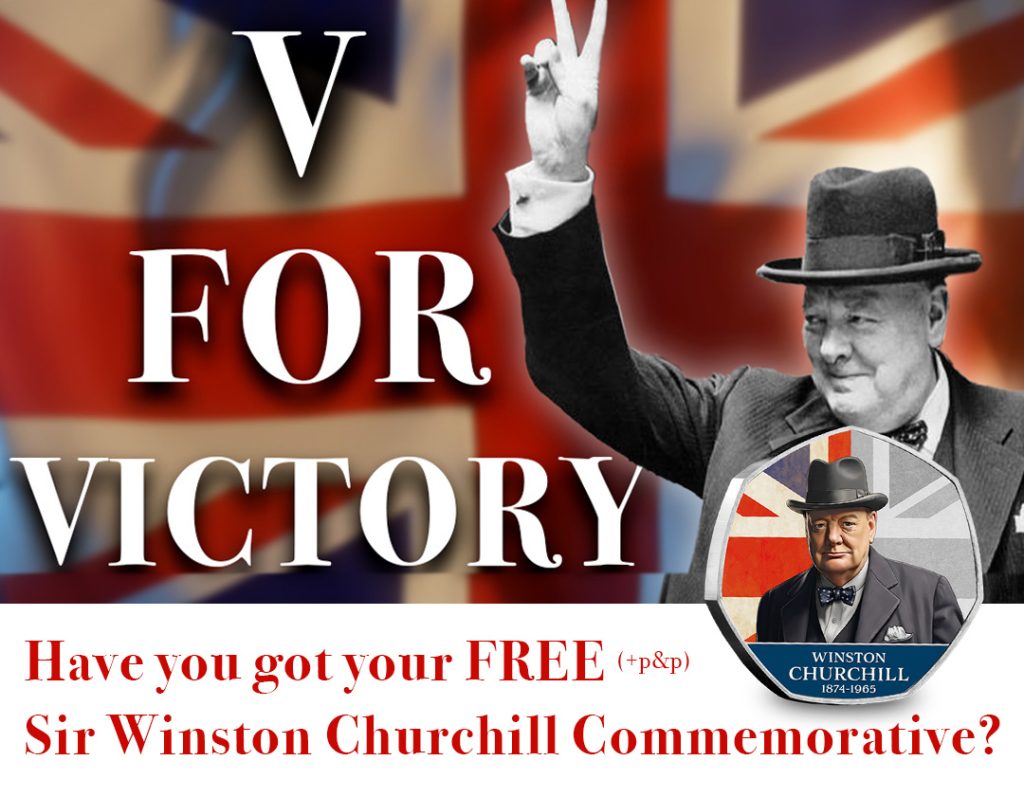
On July 19, 1941, Winston Churchill, our steadfast British Prime Minister, introduced a potent symbol of hope and defiance: the “V for Victory” campaign. This emblem of resistance became a rallying cry for the Allied forces and occupied Europe, showcasing Churchill’s leadership and his ability to inspire a war-torn world.
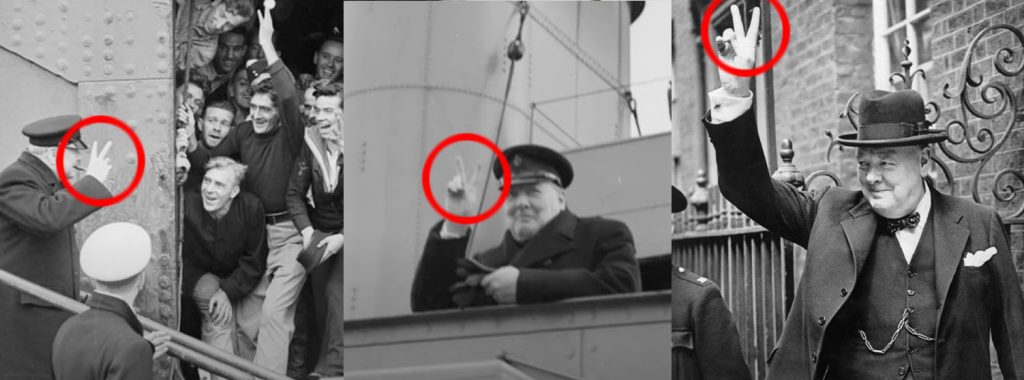
The Origin of the “V” Symbol
The idea of using the letter “V” as a symbol of victory came from Victor de Laveleye, a Belgian politician and broadcaster. In January 1941, de Laveleye suggested that “V,” the first letter of “victoire” in French, “vrijheid” in Dutch, and “victory” in English, could unify those resisting the Axis powers. This simple yet profound idea quickly spread, as people across occupied Europe began marking the letter “V” in public places as a silent act of defiance.
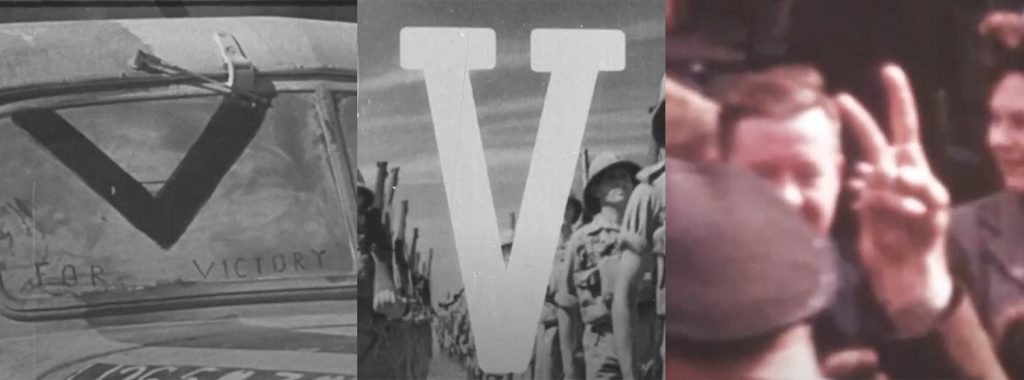
Churchill’s Leadership and Promotion of the Campaign
Churchill saw the potential of the “V” sign to inspire the public. On July 19, 1941, he endorsed the “V for Victory” campaign in a radio broadcast, urging people everywhere to adopt the symbol as a gesture of defiance and hope.
Churchill himself frequently made the “V” sign with his fingers during public appearances, creating a powerful visual connection between his leadership and the cause of victory. This gesture, captured in photographs and newsreels, became synonymous with his indomitable spirit.
The British government supported the campaign vigorously. The BBC integrated the Morse code for “V” (dot-dot-dot-dash) into its broadcasts, often using the opening notes of Beethoven’s Fifth Symphony, which matched this pattern. Posters, leaflets, badges, stickers and even cigarettes helped spread the “V for Victory” message far and wide.
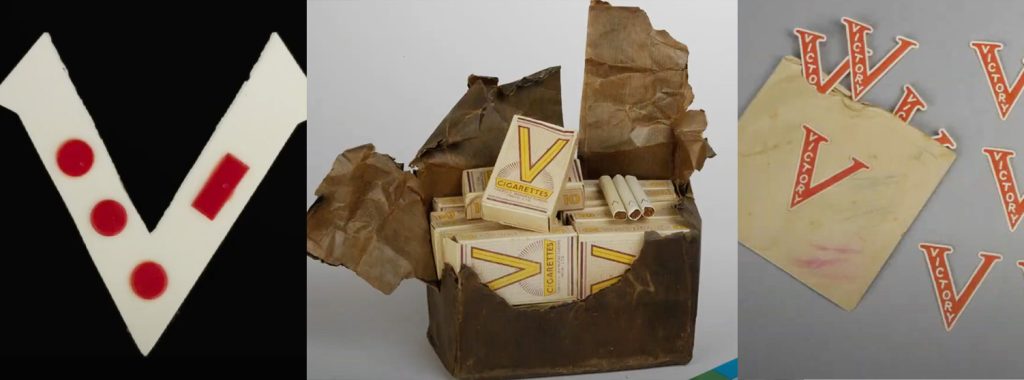
The Impact of Churchill’s Symbol
The “V for Victory” campaign significantly boosted morale in both occupied and free nations. For those under Nazi control, the symbol provided a sense of solidarity and hope, reminding them that liberation was possible. In Allied countries, it reinforced the resolve to support the war effort and remain united against tyranny.
The widespread use of the “V” symbol also had a psychological impact on the Axis powers, demonstrating the resilience and determination of those they sought to subdue.
Today, Churchill’s “V for Victory” campaign stands as a testament to his leadership and the power of symbols in rallying a nation. His strategic use of the “V” sign not only galvanised the war effort but also left a lasting legacy of hope and unity that continues to inspire.
Churchill’s ability to transform a simple idea into a powerful emblem of resistance and victory exemplifies his extraordinary leadership during one of history’s darkest times. The “V” sign remains a timeless symbol of the enduring human spirit and the fight for freedom.
Thank you for reading.

>>> Click here to secure your Sir Winston Churchill Commemorative now <<<
Operation Colour Scheme. The Fire Service’s Top Secret D-Day Mission.
2024 marks the 80th anniversary of D-Day. On 6th June 1944, the Allied Forces launched one of its biggest military operations – they came by land, sea and air and would eventually bring about the liberation of Europe and the end of World War II.
But as D-Day was being planned, more and more equipment was stockpiled in the South of England and needed to be protected, and that’s why the National Fire Service Commanders were tasked with a top secret mission of their own – Operation Colour Scheme.

Operation Colour Scheme: Protecting the Overlord Invasion’s Infrastructure
Operation Colour Scheme, a little-known but vital aspect of the Fire Service’s activity in World War II, involved moving 11,000 firemen and women and over 1,200 fire fighting vehicles to the South of England to protect resources being stored in rural areas.
In 1943, the German bombing offensive was at a lower level and so it was decided that fire fighting resources could be moved from areas in the North and the Midlands to areas in the South to cover sites that now required a higher level of protection, including:
- Logistical supply sites
- Harbours linked to the D-Day invasion – most notably coastal areas of East Sussex and an armada of ships in the lower reaches of the Thames
- Ammunition dumps
- Petrol pipe lines
The Colour Scheme – and what each colour meant
And to aid planning, England and Wales were split into 12 regions – with each region given a colour to represent the level of risk each region faced:

War Relics Forum
- Regions shaded Purple and Blue needed to be reinforced to above their maximum strength – the Purple regions were most impacted
- Regions shaded Green needed to be reinforced up to their maximum strength
- Regions shaded Brown were areas from which resources could be drawn from to provide for Purple, Blue and Green regions
The crucial role of the Fire Service during World War II
The war years proved to be the busiest for our Fire Brigades with fire fighters on the front line protecting communities during Air Raids and as part of Operation Colour Scheme.
Fire fighters were issued with one basic uniform; a steel helmet, rubber boots, trousers and waterproof leggings – although shortages saw some stuck with just Post Office uniforms!
The first air raid on London took place on 7th September 1940 and this would mark the start of The Blitz – where London endured bombings for 57 nights in a row. Most of the air raids took place at night, meaning fire fighters spent long hours extinguishing fire or dealing with explosions.
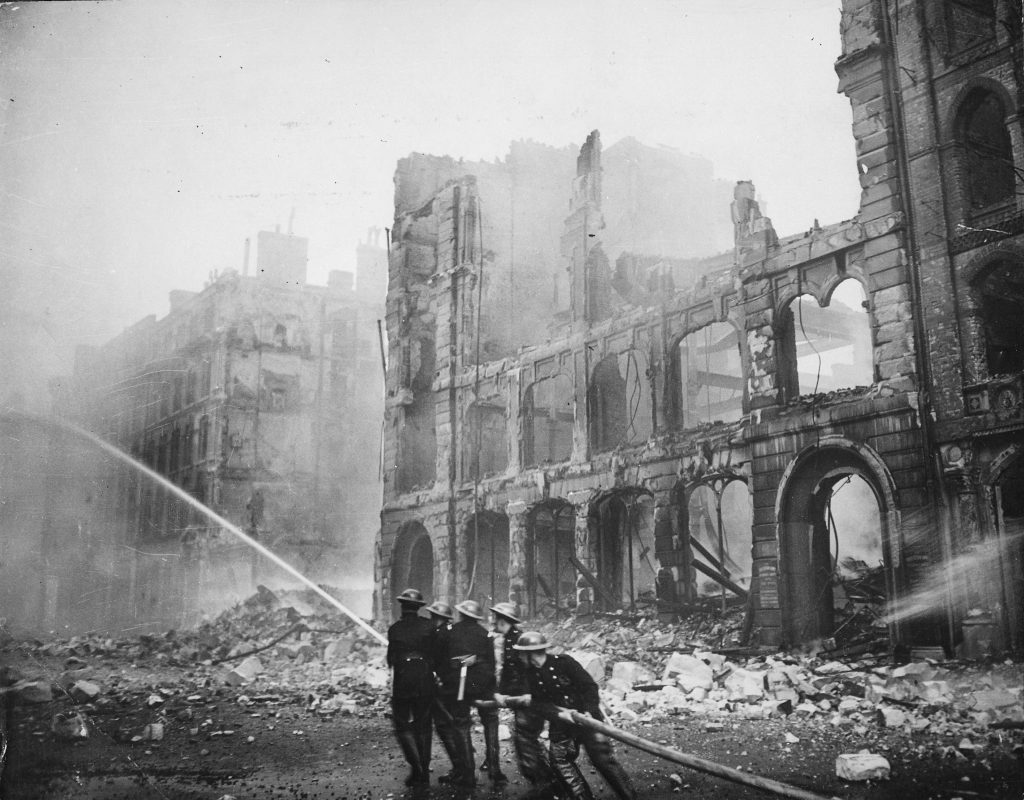
New York Times Paris Bureau Collection, Public domain, via Wikimedia Commons
In the first 22 nights of air raids, fire fighters had fought nearly 10,000 fires – and for many, this was their first experience of fire fighting…
And by 1943, over 70,000 women had enrolled in the National Fire Service, many becoming fire watches and drivers and managing the communications network.
Britain’s Prime Minister, Sir Winston Churchill honoured these great efforts and once said that the fire service “were a grand lot and their work must never be forgotten”.
The BRAND NEW History of the Fire Brigade 50p Collection
Issued to mark 200 years since the establishment of Britain’s first Municipal Fire Service, The History of the Fire Brigade 50p Collection shares the story of two centuries of heroic service.
Included in the set is the 1934 London Fire Brigade 50p Coin which depicts a World War II Fire Engine – a Dennis Chassis with an extendable ladder – in front of a background representing the city during The Blitz.

Each coin has been officially authorised by Buckingham Palace and King Charles III to pay tribute to the unsung heroes who have battled flames and saved lives for centuries.
A variety of specifications are available to order today from The Westminster Collection. Click here to view the COMPLETE range >>

